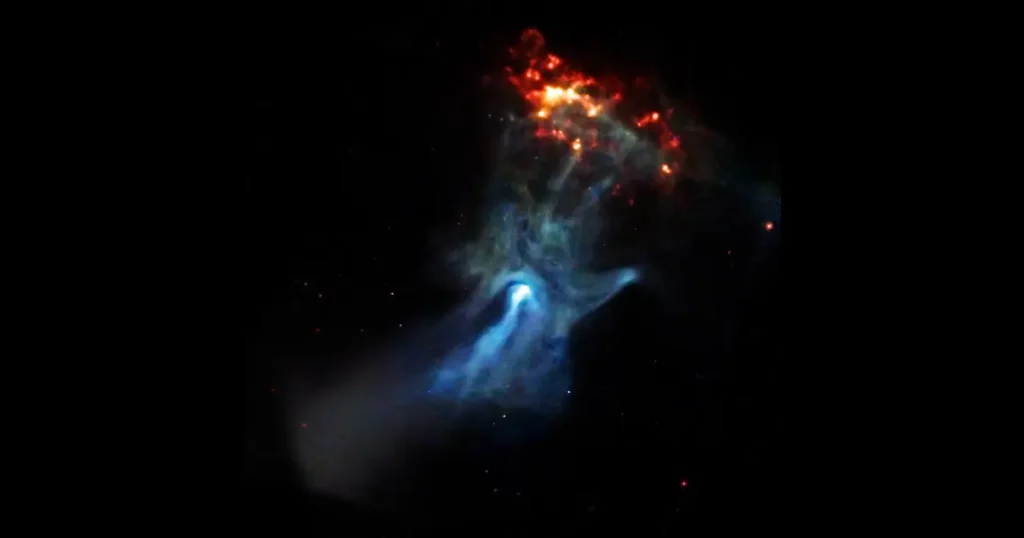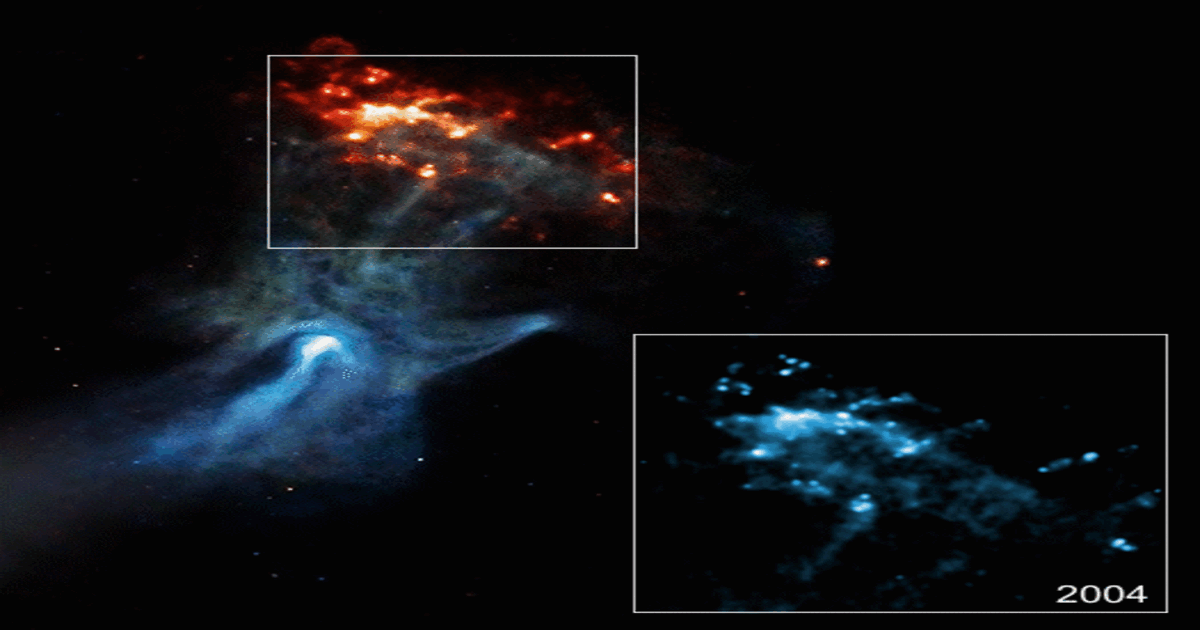Astronomers have made a groundbreaking observation using NASA’s Chandra X-ray Observatory, capturing a cosmic hand hitting a wall in space.

This event involves the motion of a cosmic structure, where a blast wave and debris from an exploded star collide with each other at a staggering 9 million miles per hour (MPH).
The Blast Wave and Debris Collision
NASA’s Chandra X-ray Observatory has, for the first time, measured the motion of a cosmic structure where a blast wave and debris from an exploded star are seen colliding with one another. This observation offers valuable insight into the behavior of cosmic structures and the forces that drive their motion.

Investigating Supernova Remnants
Chinese astronomers have utilized the ESA’s XMM-Newton spacecraft to investigate a supernova remnant known as W49B. This research further contributes to our understanding of the remnants left behind after a supernova explosion and the various processes that occur during and after the event.
The Reflection of Supernova Light
Astronomers have also discovered light from a recent supernova explosion, called SN2009ig, reflecting off the dust and gas surrounding it. This observation provides a unique opportunity to study the interplay between supernovae and their environments, shedding light on the complex interactions that take place within our universe.
The Repeated Mimicry of a Massive Star
Since 2009, astronomers have observed a massive star repeatedly mimicking a supernova before finally exploding for real. This unusual phenomenon offers a rare glimpse into the life cycle of massive stars and the various stages leading up to a genuine supernova explosion.
Conclusion
The observation of a cosmic hand hitting a wall and the resulting blast wave, moving at an astounding 9 million MPH, showcases the incredible power and complexity of the universe. These findings, along with ongoing investigations into supernova remnants and the behavior of massive stars, continue to expand our understanding of the cosmos and the dynamic forces at work within it.
Reference(s):

